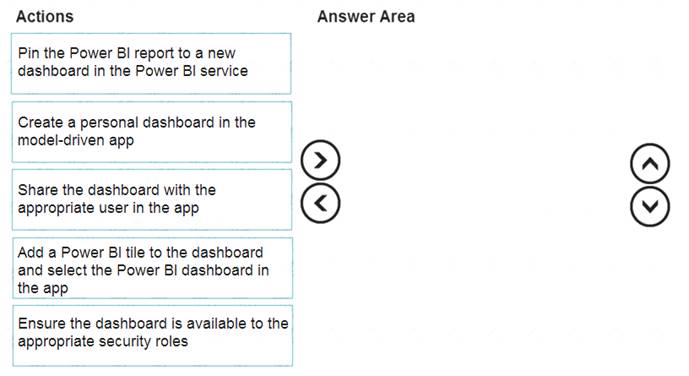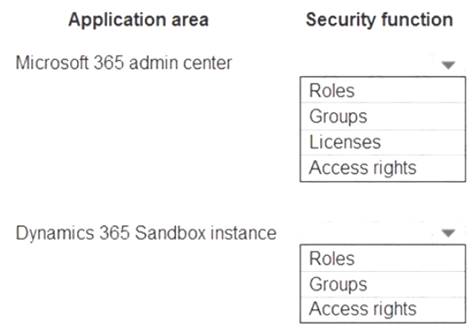- (Exam Topic 3)
You must create a new entity to support a new feature for an app. Entity data will be transactional and will be associated with business units.
You need to configure entity ownership. Which entity ownership type should you use?
Correct Answer:
A
- (Exam Topic 3)
You are designing an app for a bank.
You must create entities for the app and configure relationships between entities:
Which relationship types should you use? To answer, drag the appropriate relationship types to the correct requirements. Each relationship type may be used once, more than once, or not at all. You may need to drag the split bar between panes or scroll to view content.
NOTE: Each correct selection is worth one point.
Solution:
Text Description automatically generated
Box 1: N:1
You add a lookup column with a many-to-one relationship. Box 2: N:N
Box 3: N:1
Reference:
https://docs.microsoft.com/en-us/powerapps/maker/data-platform/data-platform-entity-lookup
Does this meet the goal?
Correct Answer:
A
- (Exam Topic 3)
You create a report by using Power Bl Desktop and publish the report to the Power Bl service. You enable Power Bl visualization embedding in a model-driven app.
You need to configure the model-driven app to display a Power Bi tile
Which three actions should you perform in sequence? To answer, move the appropriate actions from the list of actions to the answer area and arrange them in the correct order.
Solution:
1) Pin the Power BI report to a new dashboard in the Power BI service
2) Create a personal dashboard in the model-driven app (as Power BI dashboards are always personal dashboards (that can be shared))
3) Add a power BI tile to the dashboard and select the Power BI dashboard in the app.
Does this meet the goal?
Correct Answer:
A
- (Exam Topic 2)
You need to coordinate updates and deployment for managed solutions containing completed work without disrupting the system.
What should you do? To answer, select the appropriate options in the answer area.
NOTE: Each correct selection is worth one point.
Solution:
Box 1: Deploy a patch with the changes made from the current solution. Scenario:
The Onsite Visit managed solution has a table that is not in the Verification Process Automation managed solution. This table must be upgraded prior to the go-live date without the other shared components.
Box 2: Deploy a full copy of the original solution using the upgrade option. Then, deploy the new solution by using the update option.
Scenario: All components required for the verification process must be included in a new solution. Corporate security requires that deployments to non-development environments must be automated using
service accounts.
Managed solutions are used to move customizations from the development environment to other higher-level environments. These solutions are created and maintained by the power users and provided to internal IT for deployment when they are ready.
Note:
Upgrade This is the default option and upgrades your solution to the latest version and rolls up all previous patches in one step. Any components associated to the previous solution version that are not in the newer solution version will be deleted. This is the recommended option as it will ensure that your resulting configuration state is consistent with the importing solution including removal of components that are no longer part of the solution.
Update This option replaces your solution with this version. Components that are not in the newer solution won't be deleted and will remain in the system. This option is not recommended as your destination environment will differ in configuration from your source environment and could cause issues that are difficult to reproduce and diagnose.
Reference: https://docs.microsoft.com/en-us/power-apps/maker/data-platform/update-solutions
Does this meet the goal?
Correct Answer:
A
- (Exam Topic 3)
You are a Dynamics 365 Customer Services administrator. You have a Production instance and Sandbox instance.
Users record Production instance data in the Sandbox instance.
You need to ensure that the users only record data in the Production instance.
Which security function needs to be edited to prevent access to the Sandbox? To answer, select the appropriate options in the answer area.
NOTE: Each correct selection is worth one point.
Solution:
Reference:
https://docs.microsoft.com/en-us/power-platform/admin/control-user-access
Does this meet the goal?
Correct Answer:
A